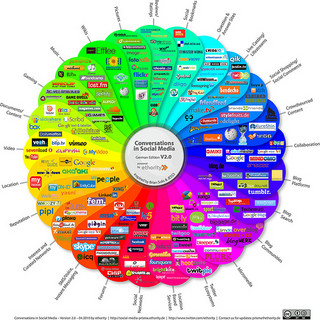What is transmedia storytelling? It’s the use of various types of media to tell different aspects of a single story. It is a truly modern and integrative way of delivering content, be it marketing or media content; with consumers and companies both engaged and interested, it’s clear that transmedia storytelling will continue to grow as a method of content delivery.
Another aspect of transmedia storytelling is the fact that consumers are not passive in their absorption of this form of storytelling. By creating elaborate storyworlds, including games, inspiring fan video spin-offs, and more, transmedia storytelling can keep consumers engaged in a way that traditional storytelling does not. It keeps awareness up by continually exposing consumers to new content.
Transmedia storytelling is currently used frequently to create consumer engagement about the release of upcoming media, such as video games, movies, and television shows. In addition, more and more brands are using it to create excitement about a story world or character related to the brand.
Factors Behind Transmedia Storytelling
The main driving force behind the growing prevalence of transmedia storytelling is simple: consumers are using a variety of devices, especially mobile devices, in order to consume media in smaller bites. Whether the media is news, entertainment, or work-related, the days of simply reading a news story in print, seeing a movie in theaters, or learning about a new product through a single source are over.
When it comes to television shows and movies, the concept has taken off both because of the prevalence of mobile consumption, but also because transmedia storytelling offers so many more opportunities for fan engagement, creating not just stories but entire story worlds. Similarly, brands can use it to open up new opportunities for continuous consumer engagement.
Using Transmedia Storytelling
Just as movies, video games, and television shows use the future of engagement: transmedia storytelling to create elaborate worlds in which consumers can engage, so can brands. Some of the top brands in the world, including Coca-Cola, Old Spice, Audi, and McDonald’s have used the method in ad campaigns, bringing characters or worlds to life using ads, videos, social media, and games.
In brand advertising, transmedia storytelling can be used either for in the short term as a campaign for a specific product or time period, or as a long-term method to maintain consumer awareness. Moreover, while the brands listed above are very well-known, national corporations, smaller brands can be equally effective in using this method. As more and more people become aware, directly or indirectly, of what transmedia storytelling is, the trend will only continue to grow.
